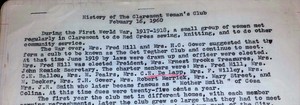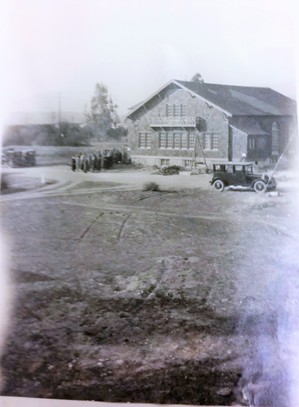I’m becoming a historian through osmosis. After a couple of weeks of creating metadata, I have an increasing understanding of the documents and the context in which they exist. I already knew some things from scanning documents and looking for interesting tidbits for social media and blog posts.
Now that I’m creating metadata, my understanding of the topics in our collection has increased tenfold. This is the nature of creating metadata, I am trying to synthesize information contained in the document so that when it is uploaded researchers browsing our collection will be able to filter through the material.
It is obviously interesting to learn about major historical events like the construction of the Hoover Dam, but it may be more surprising to hear that my favorite things to learn about are the less significant narratives. This week, for example, I created metadata for a series of letters written between 1935 and 1938 between the City of Ontario and the Metropolitan Water District of Southern California.
During this time the Colorado River was seen as the solution to the water scarcity problem in Southern California. Increasing numbers of people settling in the area meant increasing amounts of water was required for both agricultural and domestic use. Southern Californians looked east to the Colorado River, one of the largest rivers in the United States for assistance.
A dam in the Boulder Canyon was proposed and subsequently an aqueduct leading to Southern California. The Metropolitan Water District of Southern California was responsible for the building of the Colorado River Aqueduct. The Metropolitan Water District of Southern California originally encompassed Anaheim, Beverly Hills, Burbank, Compton, Fullerton, Glendale, Long Beach, Los Angeles, Pasadena, San Marino, Santa Ana Santa Monica, and Torrance. Later on it would include dozens of Southern Californian cities including Ontario.
This series of letters, however, gives a smaller, more intimate, and incredibly interesting history of this time. According to letters from the City of Ontario, several city streets had been damaged by the construction of the Colorado River Aqueduct. The letters addressed to the Metropolitan Water District of Southern California requested that they cover the cost required to repair the city streets. This correspondence continues with the Metropolitan Water District of Southern California’s denial of responsibility of the damage.
Between 1935 and 1938, the City of Ontario and the Metropolitan Water District of Southern California send letter after letter until a conclusion is made. According to one of the final letters, an Ontario City Council meeting passed a resolution that freed the Metropolitan Water District of Southern California from liability for the damage done during the construction of the Colorado River Aqueduct.
As I created metadata for these items, I was intrigued by this story. Although it is not a major event in the history of Southern California, it is an interesting narrative that could very easily have been lost to time. Instead I am able to make these letters available to researchers through the Claremont Colleges Digital Library.









